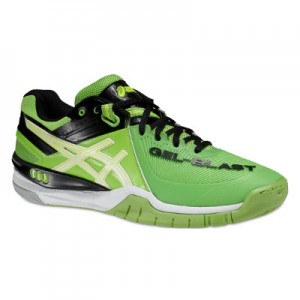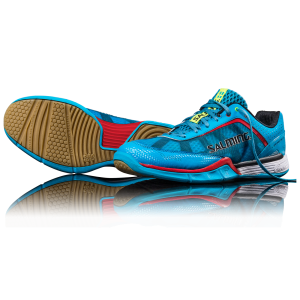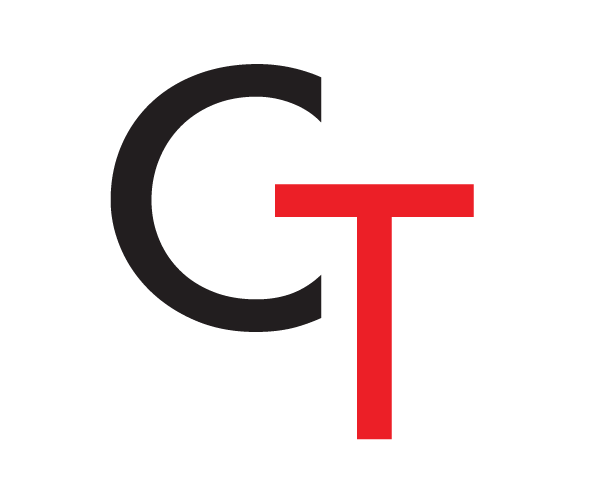In dealing with the rigorously physical demands of squash, a shoe must carry a few important qualities be considered suitable for the game. They must be lightweight, supportive, durable and comfortable enough to allow its wearer to perform to the best of their abilities. From the standpoint of player safety and performance, it is beneficial for a shoe to allow the players foot to be as close to the court as possible. This is the case since it facilitates quick and aggressive lateral movements while lowering the likelihood of rolling an ankle.
On a quick comparison of a running shoe to a squash shoe, you would notice that on average running shoes, which are designed exclusively for forward motion, have thicker soles than court shoes. I have to admit, when I first made this observation, questions immediately arose in my mind regarding the quality of the cushioning you’d receive from an indoor court shoe. Especially since they are designed to have a very thin sole and carry no extra material keeping them as lightweight as possible. After burning through a few different pairs of kicks, I’ve come to appreciate the research and engineering which has gone into incorporating adequate cushioning in areas of the foot that need it most. Let’s compare and contrast some of the techniques and materials companies utilized by two of our more popular shoe makers to ensure a properly cushioned court shoe.
The two primary sites in need of cushioning during on court movements fall at the forefoot (beneath the ball of the foot) and at the heel. Functionally, these are the areas of foot subjected to the highest degree of impact as they serve as the primary sites of push-off and landing respectively. The shoe designs attempt to strike the perfect balance between padding these regions of the foot and keeping the overall mass of the shoe at a minimum.
Asics have been a longtime preferred brand of court shoe among court athletes on a global scale. In the way of cushioning they can be considered one of sectors most innovative leaders. In 1986 Asics introduced their first line of running shoes that incorporated GEL on the underside of the foot. Today this has become a staple in most of their designs. The GEL-based underside of the shoe offers a lightweight, effective cushioning system that has been incorporated into both the forefoot and rearfoot regions of their court shoes. This combination of cushioning efficacy and deliberately placed GEL renders their shoes highly suitable for in squash.
 In addition to GEL cushioning, Asics have done a wonderful job from a biomechanical standpoint minimize the ill-effects of impact absorption by the foot. The Impact Guidance System (I.G.S) incorporated into their products address the fact that the structure of the foot dynamically reacts to impact from the bottom of the foot. While the bulk of foot movement during propulsive actions occurs in the sagittal plane, the I.G.S system facilitates the torsional foot movements which occur on a much smaller scale. Allowing the foot to act in a more anatomically natural way on landing and push off using the I.G.S system, the shoes reduce the risk of impact related injury.
In addition to GEL cushioning, Asics have done a wonderful job from a biomechanical standpoint minimize the ill-effects of impact absorption by the foot. The Impact Guidance System (I.G.S) incorporated into their products address the fact that the structure of the foot dynamically reacts to impact from the bottom of the foot. While the bulk of foot movement during propulsive actions occurs in the sagittal plane, the I.G.S system facilitates the torsional foot movements which occur on a much smaller scale. Allowing the foot to act in a more anatomically natural way on landing and push off using the I.G.S system, the shoes reduce the risk of impact related injury.
 More recently, we’ve noticed that Salming has been a brand that has started to make its way into the squash market and have been steadily gaining popularity. All of the Salming court shoe models are extremely lightweight, supportive and as an added bonus come in a number of flashy colours. In the Race series traditional foam cushioning is provided at heel which performs quite well when faced with high impact forces. Additionally, RE35 Rebound Foam is included in the forefoot region which increases the rebound properties of the shoe following impact absorption. In the new Viper the heel cushioning is present but there RE35 rebound foam is not present in the forefoot area. This is done to give the player a more connected feel to the court floor but does limit the shock absorption of the shoe in the forefoot area. It is a bit of a trade-off. They are a bit lighter and being more connected to the floor helps from a performance perspective but not having the cushioning doesn't protect the forefoot as much from shock.
More recently, we’ve noticed that Salming has been a brand that has started to make its way into the squash market and have been steadily gaining popularity. All of the Salming court shoe models are extremely lightweight, supportive and as an added bonus come in a number of flashy colours. In the Race series traditional foam cushioning is provided at heel which performs quite well when faced with high impact forces. Additionally, RE35 Rebound Foam is included in the forefoot region which increases the rebound properties of the shoe following impact absorption. In the new Viper the heel cushioning is present but there RE35 rebound foam is not present in the forefoot area. This is done to give the player a more connected feel to the court floor but does limit the shock absorption of the shoe in the forefoot area. It is a bit of a trade-off. They are a bit lighter and being more connected to the floor helps from a performance perspective but not having the cushioning doesn't protect the forefoot as much from shock.
When it comes time to select a shoe, it really comes down to the personal requirements you as an individual have in a pair of shoes. Focusing on a cushioning standpoint alone, the ASICS models provide excellent cushioning in what (in my personal opinion) feels to be a little bit of a thicker sole. For a player who may be more explosive or heavier, a pair of ASICS may provide superior cushioning to the underside of the foot. Of course the major downside of more extensive GEL based cushioning would be a loss of “court closeness” that the player may experience. On the flipside, a pair of Salming’s may be more suitable player who has moderate cushioning needs and values a shoe that allows the player to be closer to the court. Finding the best pair of shoes will come down to the personal needs of each player but by carefully looking at what sort of cushioning is offered by each company, a player may find a shoe that better suits their needs.
For a closer look at shoe technologies please refer to our squash shoe guide!
